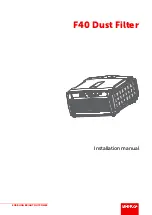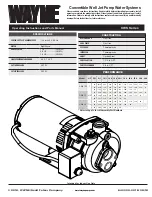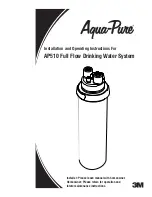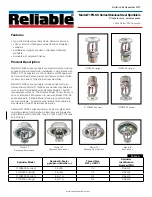
III. OPERATION
A.
INSTALLATION
1.
Proper pretreatment must be determined and installed prior to the RO system.
2.
The water supply and pretreatment equipment should be sufficient to provide a
minimum of 10-psig at the maximum feed flow.
3.
An electrical receptacle with a ground fault interrupt (GFI) is highly recommended.
4.
Responsibility for meeting local electrical and plumbing codes lies with the owner /
operator.
5.
Install indoors in an area protected from freezing. Space allowances for the removal
of the membranes from the pressure vessels should be provided.
6.
Verify that a prefilter cartridge is installed in the housing. (see figure #1, item I).
B. PLUMBING CONNECTIONS
Note: It is the responsibility of the end user to ensure that the installation is done according to
local codes and regulations.
1.
Connect the pretreated feed water line to the prefilter inlet (Figure # 1 item M). A
feed water shutoff valve should be located within 10 feet of the system.
2.
Temporarily connect the product water outlet to a drain. The product outlet is located
behind the panel at the top of the product flow meter. The product water line should
never be restricted. Membrane and/or system damage may occur if the product line is
blocked.
3.
Connect the reject water outlet to a drain. The reject outlet is located behind the
panel at the top of the reject flow meter. The reject drain line should never be
restricted. Membrane and/or system damage may occur if the reject drain line is
blocked. An air gap must be located between the end of the drain line and the drain.
The use of a standpipe or other open drain satisfies most state and local codes and
allows for visual inspection and sampling.
C.
ELECTRICAL
Note: It is the responsibility of the end user to ensure that the installation is done according to
local codes and regulations.
1.
Make sure the on / off switch in the off position (Figure # 1 item A).
2.
Plug the unit into a 115 volt 3 prong outlet. Note – The R4X40-2 requires a 20 amp
outlet. Systems configured for 230 volts do not come with a plug.
3.
If a tank level switch and/or pretreatment interlock is used, remove the jumper(s)
from the terminals on the controller and install the switch leads into the terminals (see
figure #2). The tank level and pretreatment interlock switches should be closed for the
RO system to run. When the circuit is open the RO system turns off and the front
panel indicator turns on.
Summary of Contents for R4X40
Page 1: ...REVERSE OSMOSIS INSTALLATION AND OPERATION MANUAL Model R4X40...
Page 2: ......
Page 8: ...Figure 1...




































